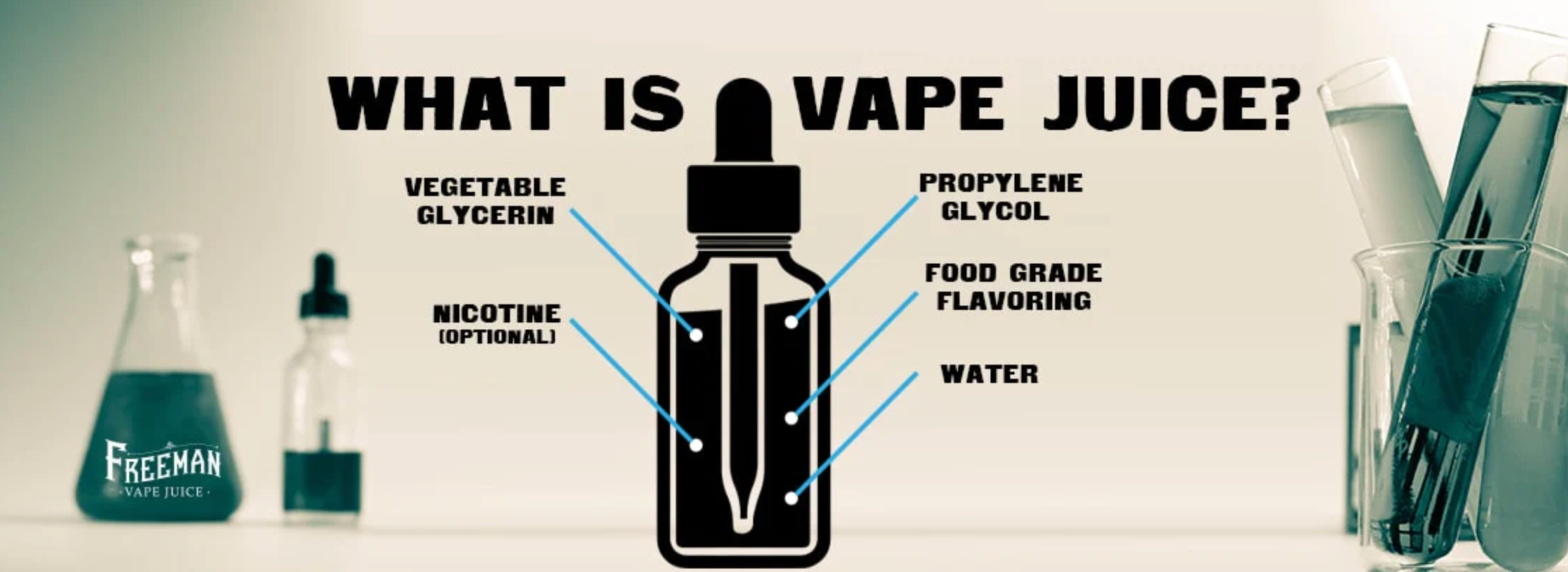Understanding Vape Juice: Ingredients, Varieties, and Safety
The world of vaping is a fascinating realm that, while increasingly popular, can seem intimidating for newcomers. As with any product that we consume or inhale, it's essential to understand the makeup and safety of vape juice, the flavored liquid used in vape devices. In this comprehensive article, we'll dive into the ingredients of vape juice, explore the varieties, and discuss safety considerations.
What is Vape Juice?
Vape juice, also known as e-liquid or e-juice, is the liquid that's heated into an aerosol in a vaping device or e-cigarette. The user then inhales this aerosol. Vape juice comes in various flavors and nicotine strengths, offering a customized experience for each vaper.
Ingredients in Vape Juice
Vape juice contains several key ingredients: propylene glycol, vegetable glycerin, nicotine, and flavorings.
1. Propylene Glycol (PG)
Propylene glycol is a synthetic organic compound that's odorless, colorless, and has a faintly sweet taste. It's widely used in the food and pharmaceutical industries as it is a safe carrier for many additives. In vape juice, PG serves as a carrier for the flavor and nicotine. It also provides the 'throat hit' that simulates the feeling of smoking.
2. Vegetable Glycerin (VG)
Vegetable glycerin is a natural chemical derived from vegetable oil. It's thicker than PG and has a slightly sweet taste. In vaping, VG produces thicker clouds of vapor and provides a smoother throat hit than PG.
3. Nicotine
Nicotine is an optional ingredient in vape juice. It's the same stimulant found in traditional cigarettes, and it's what makes both smoking and vaping addictive. However, the concentration of nicotine in vape juice can vary greatly, allowing users to choose from high-strength, low-strength, or even nicotine-free options.
4. Flavorings
Flavorings account for the wide variety of tastes available in vape juice. The flavors used in vape juice are food-grade and safe to ingest, though research is still ongoing into their effects when inhaled over long periods.
Varieties of Vape Juice
Vape juice is incredibly versatile, and its varieties cater to the diverse preferences of vapers worldwide. They can be broadly categorized by flavor, nicotine strength, and PG/VG ratio.
1. Flavor
The flavor is perhaps the most diverse aspect of vape juice. From traditional tobacco and menthol to fruit, dessert, candy, and even cocktail flavors, the choices are almost endless. Some popular flavors include strawberry, apple, vanilla, mint, and even complex blends like 'unicorn milk' (a mix of strawberry and cream).
2. Nicotine Strength
Nicotine strength in vape juice varies widely, allowing vapers to choose according to their preference or goal. For those trying to quit smoking, starting with a higher nicotine strength and gradually decreasing can be an effective strategy.
3. PG/VG Ratio
The PG/VG ratio in vape juice can greatly affect the vaping experience. High-PG liquids will give a stronger throat hit and carry flavor more effectively, while high-VG liquids will produce thicker, more voluminous vapor clouds.
Safety of Vape Juice
The safety of vape juice is a topic of considerable debate and ongoing research. While vaping is generally agreed to be less harmful than smoking, it's not without potential risks. Let's consider a few key safety aspects.
1. Quality of Ingredients
The quality of ingredients in vape juice can significantly impact its safety. Reputable manufacturers adhere to high standards and use food-grade or pharmaceutical-grade ingredients. Lower quality, cheaper products may contain impurities or unsafe additives, making it crucial to buy vape juice from trusted sources.
2. Nicotine Consumption
While nicotine is not carcinogenic, it's highly addictive and can have several health impacts, including increasing heart rate and blood pressure. Therefore, managing nicotine consumption is an important safety consideration when vaping.
3. Potential Lung Damage
There have been cases of lung injury associated with vaping, often linked to the use of illicit vaping products containing THC (the primary psychoactive compound in cannabis) and Vitamin E acetate.
4. Long-Term Effects
As vaping is a relatively new phenomenon, the long-term effects on health are not yet fully known. While early research suggests it's likely less harmful than smoking, more long-term studies are needed to fully understand the health impacts.
In conclusion, understanding vape juice can greatly enhance your vaping experience and safety. Be mindful of the ingredients and the quality of the vape juice you choose, and remember that while vaping is often used as a smoking alternative, it does carry potential risks. Always make informed decisions about your health and consult with a healthcare professional if you have any concerns about vaping.

